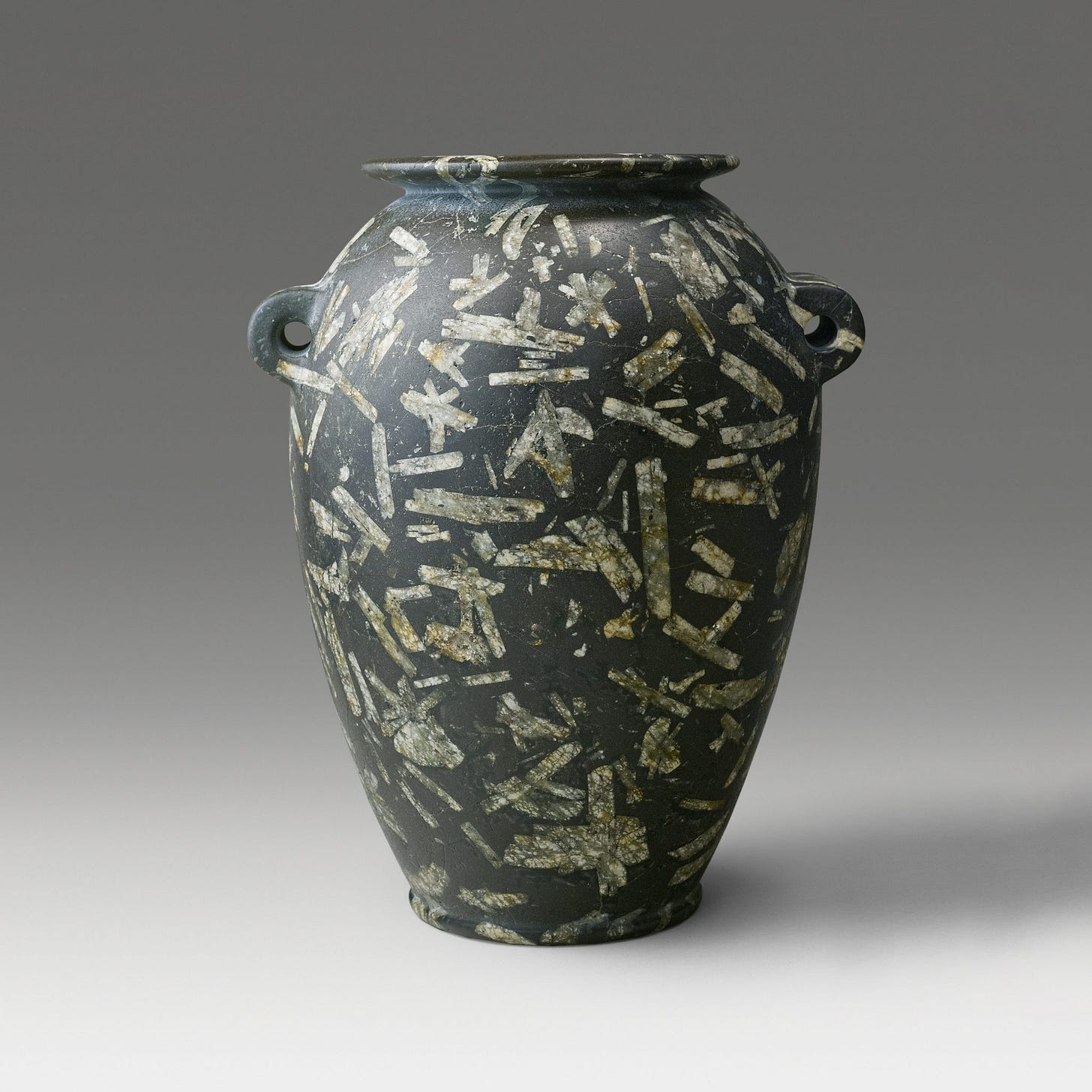Update on the Predynastic Stone Jars
They Could Not Be Replicated on a Modern CNC Machine
There is a video posted below that you need to see! But first, here is the context.
Back in March, I brought the mysterious predynastic stone jars to my readers’ attention. As a review, archaeologists found tens of thousands of stone jars under the Step Pyramid in Egypt. These vases were made of hard stones like granite and diorite, and had been machined so that the walls of the vase were only as thick as playing cards. Light can pass through the crystals in the walls of some of these vases.
Even more impressively, these jars are made to an accuracy of two-thousandths of an inch, or 50 microns! The stones they are cut from are so hard that only diamond tools can be used to cut them.
As specialists began studying these jars by taking them to expert machinists, they discovered that these jars are beyond anything that can be made today with a CNC Machine, which is a computer-controlled cutting head.
My hypothesis is that these jars were not made in Ancient Egypt. They were brought there by Gilgamesh and his men from the site of Noah’s Ark around 2008 BC. These jars were made before the Flood and had been used to give offerings at the temple, which was located at the entrance to the Garden of Eden. That is the same temple where Cain and Abel offered their sacrifices.
When Noah built the Ark, he apparently used all of the thousands of jars in the storehouse of that temple as vessels to contain his cargo and protect it from rodents. Instead of making or buying new jars, he simply used what had already been stored up over the previous 1,600 years.
After the Flood, the first culture that farmed was called the “Pre-Pottery Neolithic” because they used stone jars like these instead of clay pots. But, how is that even possible? It suggests that since there were so many of these high-quality jars in the Ark, the first ten generations after the Flood reused them instead of making new ones out of other materials like clay. It was only about two centuries after the Flood that people started making new ceramic pots.
That means that the photos below and the objects discussed in the video were cargo on Noah’s Ark before they were carried to Egypt and hidden under the Step Pyramid.
In the video below, Karoly Poka & Adam Young discuss the fact that they hired a Chinese company that specializes in making vases to replicate one of these vases with a CNC machine in alabaster, which is a very soft stone. The specialists were unable to replicate the jar because they could not hollow out the inside except with a single drill bit, and the precision of their work was only about 1/10th the precision of the predynastic stone jars. This implies that something like a CNC machine was used to make the original jars, and that it was more advanced than the CNC machines we have today in 2025.





This is incredible, Ken! I will say that there are 5-axis CNC machines with articulated cutting heads that should be able to do this. These are used for tasks like porting cylinder heads and the cutting head can pivot by up to 60 degrees inside the chamber. Having said that, this is a specialized, modern computer controlled tool and will leave tool marks even if microscopic. So what I would like to know about these jars are “are there tool marks inside?” If there are no tool marks I’m thinking something like a water jet, laser, or maybe something ultrasonic was used to do the cutting. Extremely high tech stuff!
This is so cool! I hadn’t heard of these jars before, and here I thought I’d heard of all the most interesting OOParts!
So now I’m curious, what would you consider the most compelling out of place artifact of all?